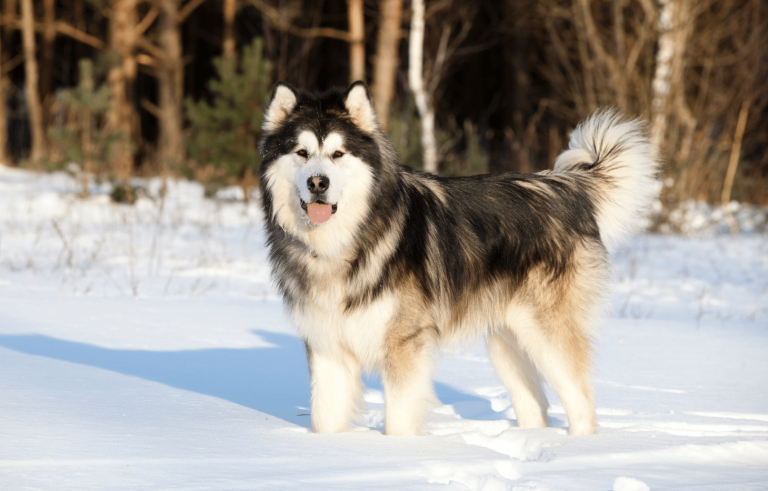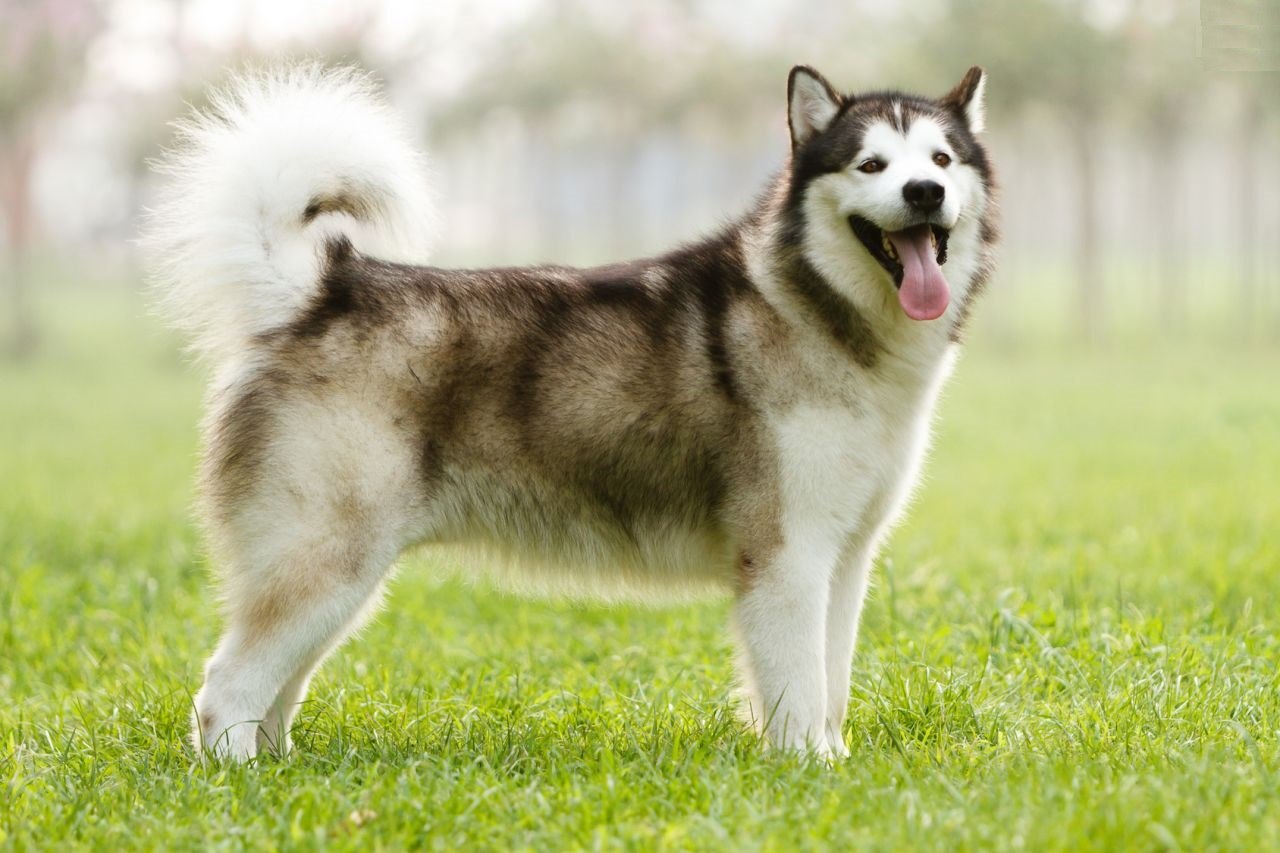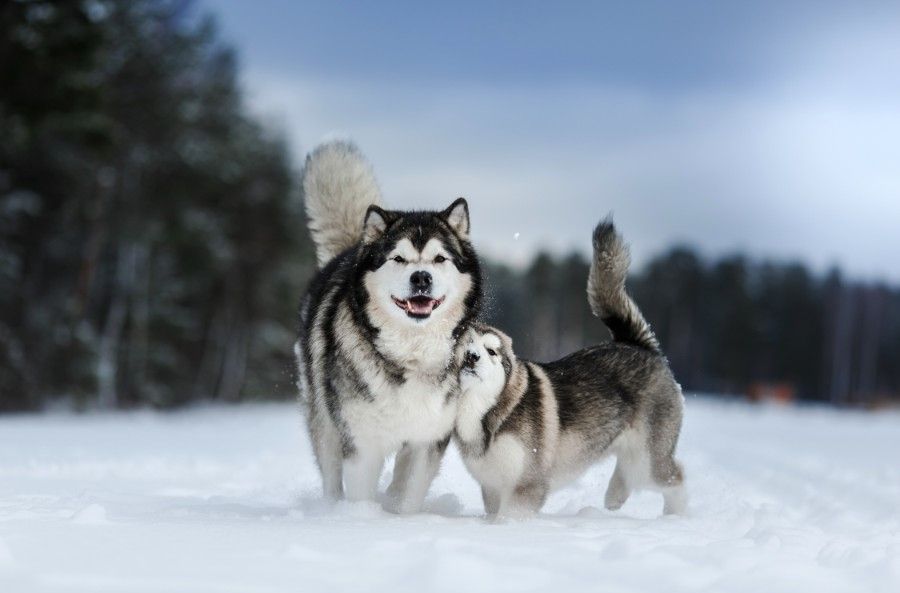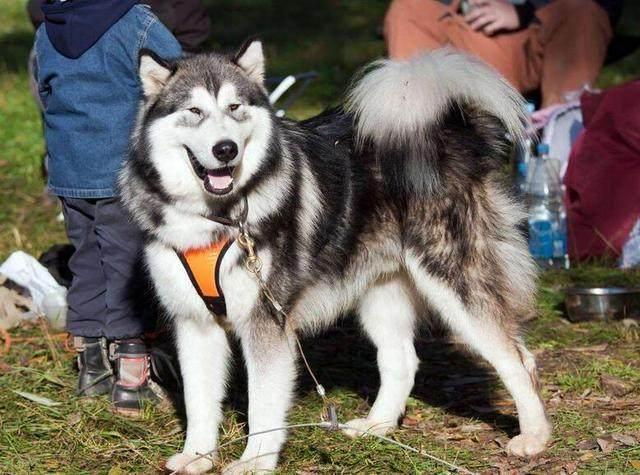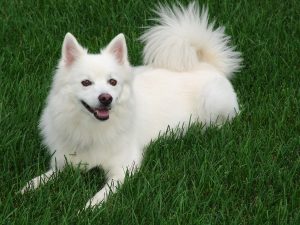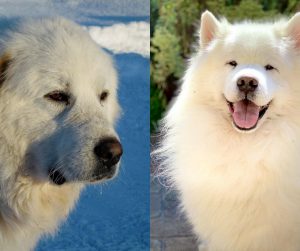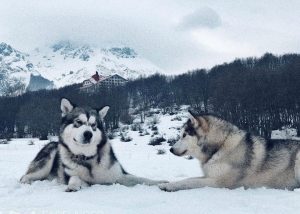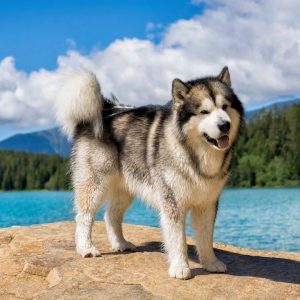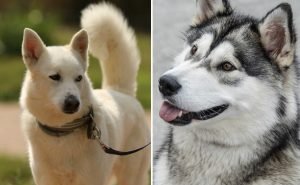A lot of people mistake the Alaskan Malamute for the Siberian Husky. But it is understandable. At first glance, only the size is the difference. But when you look deeper into the comparison, you will find a lot more differences. That being said, today, I want to talk about how big are Alaskan Malamutes.
Many people think of them as the big brothers of the Siberian Husky. This large breed was originally bred for its strength and endurance. They were bred to haul heavy freight as sled dogs and as a hound. The Malamute has many similarities in its origin and purpose with the Siberian Husky, Samoyed, Canadian Eskimo Dog, and Greenland Dog.
Now, if you have an Alaskan Malamute puppy, it is natural to be wondering what is the typical weight and size of your dog breed, right? Let’s try to tackle the issue.
Quick History
People and their dogs didn’t settle in the Arctic until the Paleo-Eskimo people some 4,500 years ago. They were followed by the Thule people 1,000 years ago, with both originating from Siberia. According to most historians and canine experts, Malamutes were bred by the Malimiut Inupiaq people of Alaska’s Norton Sound region.
They were one of the many dogs in the Alaskan region. Identified as a basal breed, the Malamute predates the emergence of modern breeds in the 19th century.
According to a study in 2013, the Alaskan Malamute has a similar East Asian origin to, but it is not related to, the Greenland Dog and the Canadian Eskimo Dog. It also contains a possible admixture of the Siberian Husky.
Another study in 2015 found that the Malamute, Siberian Husky, and Alaskan Husky share a close genetic relationship and were related to the Chukotka sled dogs from Siberia.
The study concluded that the breeds were separated from the two Inuit dogs, the Canadian Eskimo Dog and the Greenland Dog.
The Malamute and Siberian Husky retained their Siberian lineage and contributed to the genetics of the Alaskan Husky, which has evidence of crossing with European breeds.
What Is The AKC Standard?
Whenever you talk about breed size and breed info, you have to take a look at The American Kennel Club. It holds the standard for every canine, including the Alaskan Malamute breed.
According to the AKC, the Alaskan Malamute puppy grows between 23 and 25 inches and weighs between 70 and 90 pounds. Yes, they can weigh up to 100 pounds, but generally speaking, the ideal weight is between 80 and 90 pounds.
These dogs have a double coat, with an oily undercoat that can be as thick as two inches. Their outer guard coat is coarse and is longer at the withers, but no more than one inch off the sides of the body.
Same as with the Husky, their thick coat can have Agouti colors.
Growth Chart
Let’s take a look at the growth chart of the Alaskan Malamute breed. This can help you understand how big are Alaskan Malamutes at every step of the way.
| Age | Weight |
| 1 month | 5 to 10 lbs |
| 2 months | 10 to 25 lbs |
| 3 months | 15 to 30 lbs |
| 4 months | 25 to 40 lbs |
| 5 months | 30 to 50 lbs |
| 6 months | 45 to 60 lbs |
| 7 months | 50 to 65 lbs |
| 8 months | 55 to 70 lbs |
| 9 months | 55 to 70 lbs |
| 10 months | 60 to 75 lbs |
| 11 months | 65 to 75 lbs |
| 12 months | 70 to 80 lbs |
| 2 year | 75 to 85 lbs |
The above chart is only estimated by month. Do keep in mind that your pup might grow at a faster or slower pace. Each and every puppy is unique and has its own genetics. There are also factors like diet that can contribute to the growth of your furry friend.
How Big Do They Get?
A purebred Malamute appears heavy-boned, deep-chested, and has a robust body. It is all thanks to its background as an intense sled dog.
These puppies have a body that could withstand the heavy workload they had to carry and pull. Yet, unlike the Husky, Malamutes are not prone to pulling on the leash.
When Do They Stop Growing?
As you can see by the growth chart above, most Alaskan Malamutes stop growing between 18 and 24 months of age. Large dog breeds take more time to get to their fully grown adult version. Smaller dogs, on the other hand, stop growing at about 12 months of age.
You can expect your pup to be close to its full height and weight around the first birthday. But, he will continue putting on muscle and filling out the chest until he is two years old.
Alaskan Malamute vs. Giant Alaskan Malamute
Yes, there is a variation called Giant Malamute. They are bigger than the standard Malamute. While standard malamutes grow up to 25 inches and weigh a maximum of 85 lbs, the Giant Alaskan Malamute is larger. The thing is, there is a breed standard and breed info for the standard Malamute.
But there is no such thing as a breed standard for the Giant Malamute. These dogs can grow up to 35 inches, and weigh over 100 lbs. Some of them can even reach up to 200 lbs as adults. They are specifically bred to do heavy work.
Usually, you will find giant varieties in the Malamute’s natural habitat. But not much as pets in the household.
Alaskan Malamute Diet
Malamutes need food that is formulated for large breed dogs. They are prone to overeating and obesity. Make sure to control their diet.
Their high-quality food should have between 25% and 40% protein. While each food brand has its own recommended intake, usually, Malamutes need 6 cups of food per day. Read the ingredients, and make sure that the first few are from an animal source.
You can also substitute kibble with lean meat and organ meat from time to time. Your Alaskan Malamute will love it.
The Official State Dog of Alaska
In 2010, the Alaskan Malamute became the official state dog of Alaska. It took a while, but the breed finally got its due respect. It was thanks to a group of determined kids at Polaris K-12 school that took the matter to the Alaskan legislature. It was part of a school project, performing a study to find the pooch most suited to the honor.
Of course, with its long history, the Alaskan Malamute won the contest.

